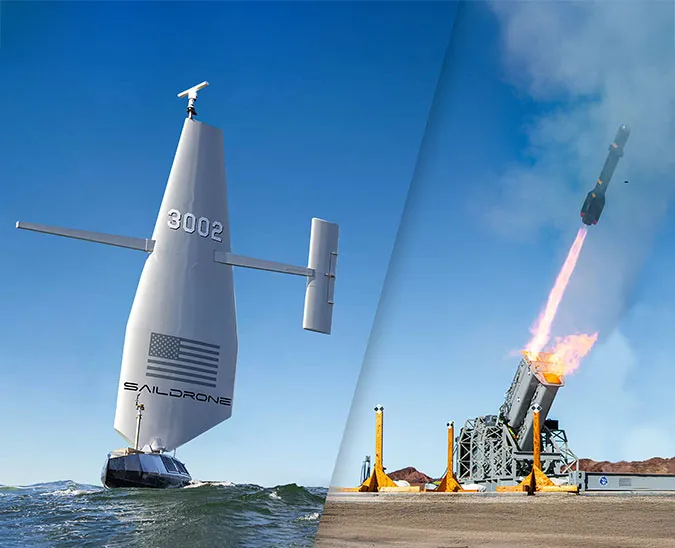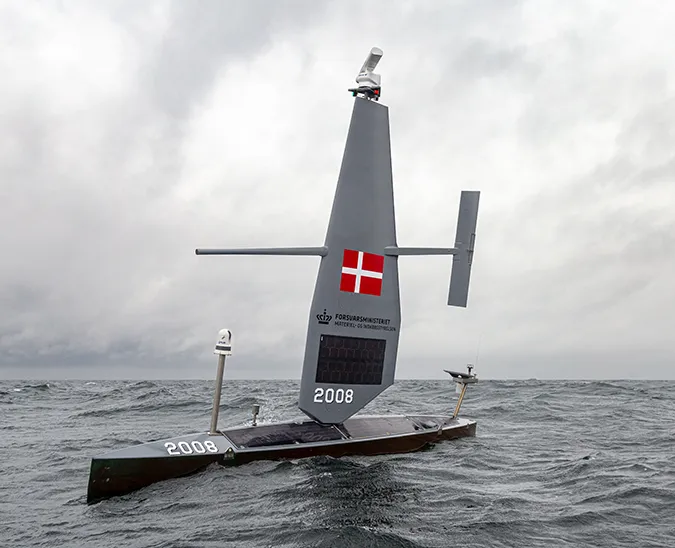Published on
Author
Saildrone’s 2019 Antarctic Circumnavigation was an ambitious mission of scientific discovery in the harshest ocean environment on the planet. The mission deployed three Saildrone uncrewed surface vehicles (USVs) with a payload of science sensors to better understand the rapid changes taking place in the Antarctic ecosystem and provide new insights into how the Southern Ocean affects the global climate. It was also an education outreach initiative using the cutting-edge Saildrone technology to bring data-driven lessons to classrooms around the world.
SD 1020 was deployed from Bluff, New Zealand, on January 19, 2019. Only 24 hours into the mission, it faced a Southern Ocean storm with winds gusting over 50 knots and massive breaking waves. SD 1020, equipped with a specially designed, lower aspect “square” wing, was able to withstand the huge forces of being rolled and submerged by 50-foot (15-meter) waves, and after sailing 13,670 miles in 196 days, it completed the world’s first autonomous circumnavigation of Antarctica on August 3, 2019.

SD 1022 and SD 1023 departed from Bluff on May 9, 2019, equipped with square wings, however, this late deployment, at the start of the southern hemisphere winter, made conditions in the Southern Ocean even more treacherous. The vehicles arrived at Drake Passage in midwinter, encountering ferocious wind, icebergs, and freezing spray. Both vehicles sustained some damage in the ice flows, and SD 1022 headed for Johannesburg, South Africa, where it was recovered in Sept. 2019. SD 1023 continued the voyage but lost contact with Saildrone Mission Control just past South Georgia Island. From then on, SD 1023 was on its own, making its way toward New Zealand.
On April 26, 2021, SD 1023, made landfall at Waratah Bay Beach, about 100 miles southeast of Melbourne, Australia. After spending 718 days at sea, SD 1023 was only 1,000 nautical miles shy of completing the circumnavigation.
A voyage for science
The Antarctic ecosystem is one of the most productive on Earth and plays an essential role in balancing the global climate, and yet the Southern Ocean is one of the most undersampled regions due to its remote location and ocean conditions that are difficult and dangerous for large ships and their crews.
Data about carbon dioxide uptake and outgassing, ocean acidification, the direct and indirect relationships between marine predators and prey, and other oceanographic and meteorological conditions is critical to advancing global science and climate research. The 23-foot Saildrone Explorer is ideal for this work. With no engine and powered by wind and the sun, these vehicles are virtually silent and do not disturb the species they are programmed to track.
Every Saildrone USV is equipped with a standard payload of sensors to capture key oceanographic and meteorological data above and below the sea surface. SD 1020 was also equipped with a CO2 sensor designed by the National Oceanographic and Atmospheric Administration (NOAA)’s Pacific Marine Environmental Laboratory and an Acoustic Doppler Current Profiler to measure ocean currents.
SD 1022 and SD 1023 were equipped with Simrad WBT-mini echo sounders to collect acoustic data about underwater organisms like Antarctic krill, an important food source for a variety of large species including whales, penguins, and seals.
Despite its harrowing journey, the only visible damage to SD 1023 was two missing hatch covers and marine growth on the hull. The computer, data, and Simrad WBT-mini echo sounder are all intact. The data will be expedited back to Saildrone headquarters in Alameda, CA, and relayed to our science collaborators for analysis.

A mission accomplished
The science mission from the 2019 Antarctic Circumnavigation recently won a Gold Medal for Scientific/Engineering Achievement and the Ron Brown Excellence in Innovation Award as part of the Department of Commerce 72nd Annual Honor Awards Program.
Scientists had assumed that the Southern Ocean was absorbing large amounts of carbon dioxide from the atmosphere until measurements from Argo floats showed that in some cases, the Southern Ocean was emitting CO2, rather than absorbing it. Data collected by SD 1020 confirmed this finding, and the vehicle also got close enough to one of the floats to cross-check the measurements. The data collected by SD 1023’s echo sounder is hoped to reveal new insights about underwater organisms in the Southern Ocean.
The mission also featured a series of STEM-oriented lesson plans, free for teachers and parents, to bring the wonder of Antarctica to classrooms around the world. The lesson plans are organized around three aspects of the Antarctic ecosystem: Antarctic krill at the base of the food chain, the carbon cycle and ocean acidification, and penguins as an indicator of climate change. Click here to access the lesson plans.
Each module includes an entertaining and engaging video linking the topic to Saildrone’s cutting-edge technology, and three to five comprehensive lesson plans made up of a class presentation, teaching notes, and complementary worksheets for students. The lessons have been downloaded by educators and enjoyed by students from Australia to Iceland.
Saildrone would like to say a special thank you to Linda Davies who first spotted SD 1023 on the remote beach, and Waratah Beach Surf Life Saving Club, Waratah Marine Search and Rescue, Life Saving Victoria, and the local Victoria authorities for helping us to bring SD 1023 home.
Resources
Theo Stein, “First Saildrone Circumnavigates Antarctica, Seeking Carbon Dioxide,” National Oceanic and Atmospheric Administration, Climate.gov, August 22, 2019
Adrienne Sutton, Nancy Williams, Bronte Tilbrook, “Constraining Southern Ocean CO2 Flux Uncertainty Using Uncrewed Surface Vehicle Observations,” Geophysical Research Letters, Volume 48, Issue 3, January 19, 2021
NOAA Research News, “Is the Southern Ocean Absorbing or Emitting Carbon Dioxide?” research.noaa.gov, February 11, 2021





